How to Draw a Meadow
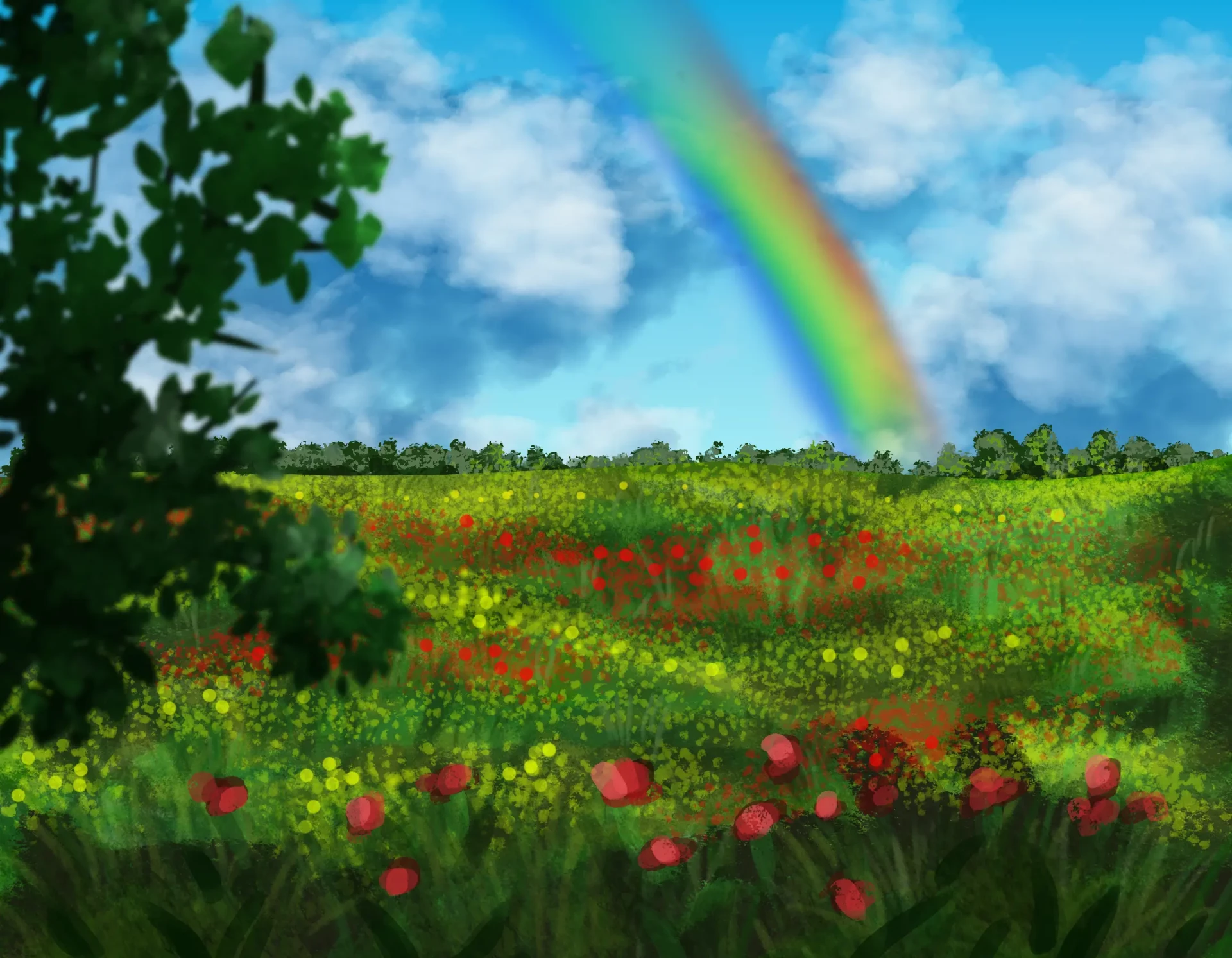
In the midst of extreme or grandiose ecosystems, there are also landscapes of pure serenity: meadows where animals roam freely and flowers stretch as far as the eye can see. Natural places, where simplicity itself becomes a spectacle.
In this tutorial, we will learn how to draw a meadow, a vast expanse of grass and flowers, where every detail counts.
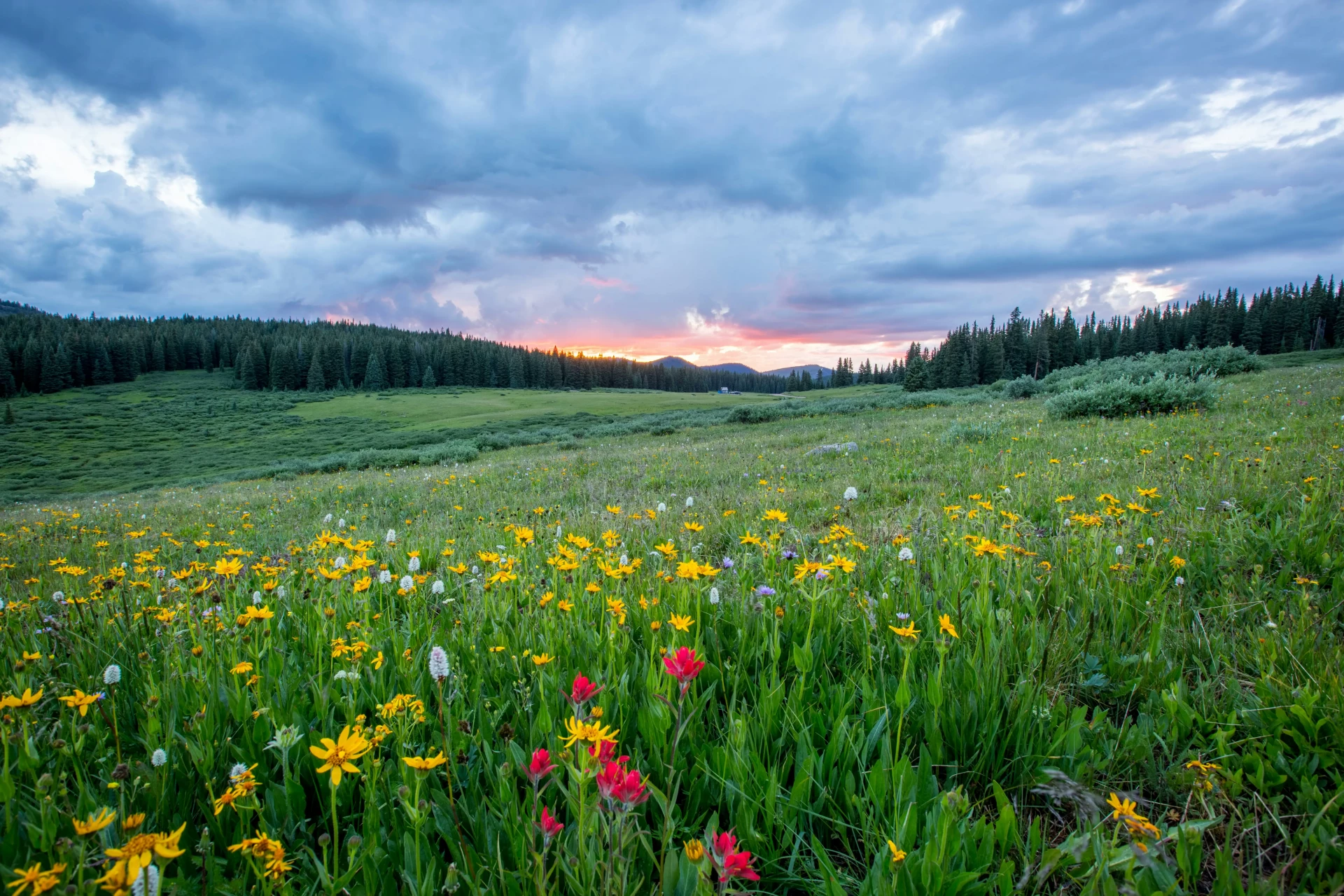
Drawing a meadow step by step
We will of course start with a gradient for the sky. This will be mainly blue, but without going towards a too dark tone. Use an intermediate blue, almost cerulean, and blend it down to a pastel blue. This smooth transition will bring the serenity we seek to the composition.
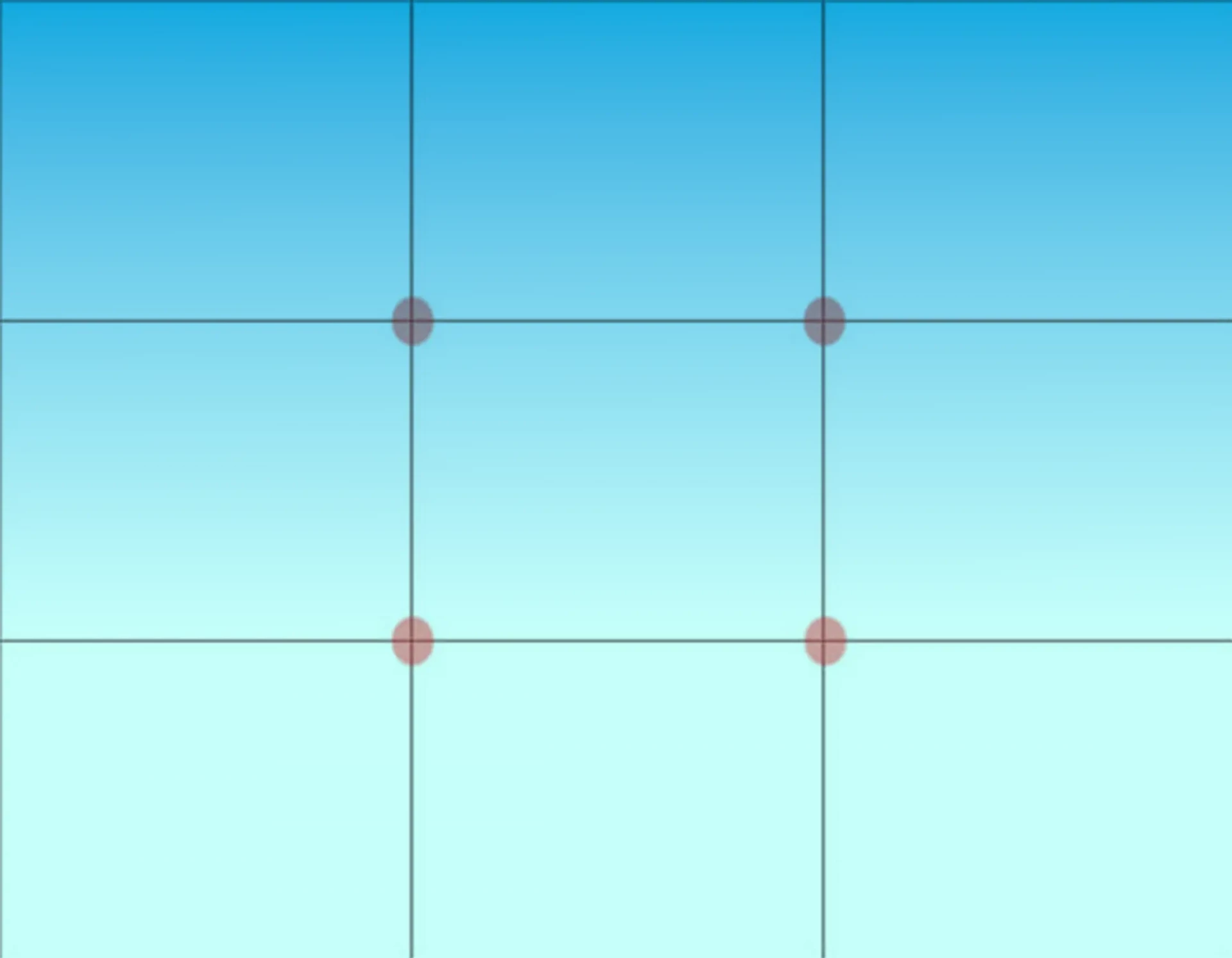
The ideal would be to use one of the grid lines as a reference. But in this case, we will slightly cheat in order to compose an image with a somewhat artificial balance: draw a green stripe that will serve as a plain.
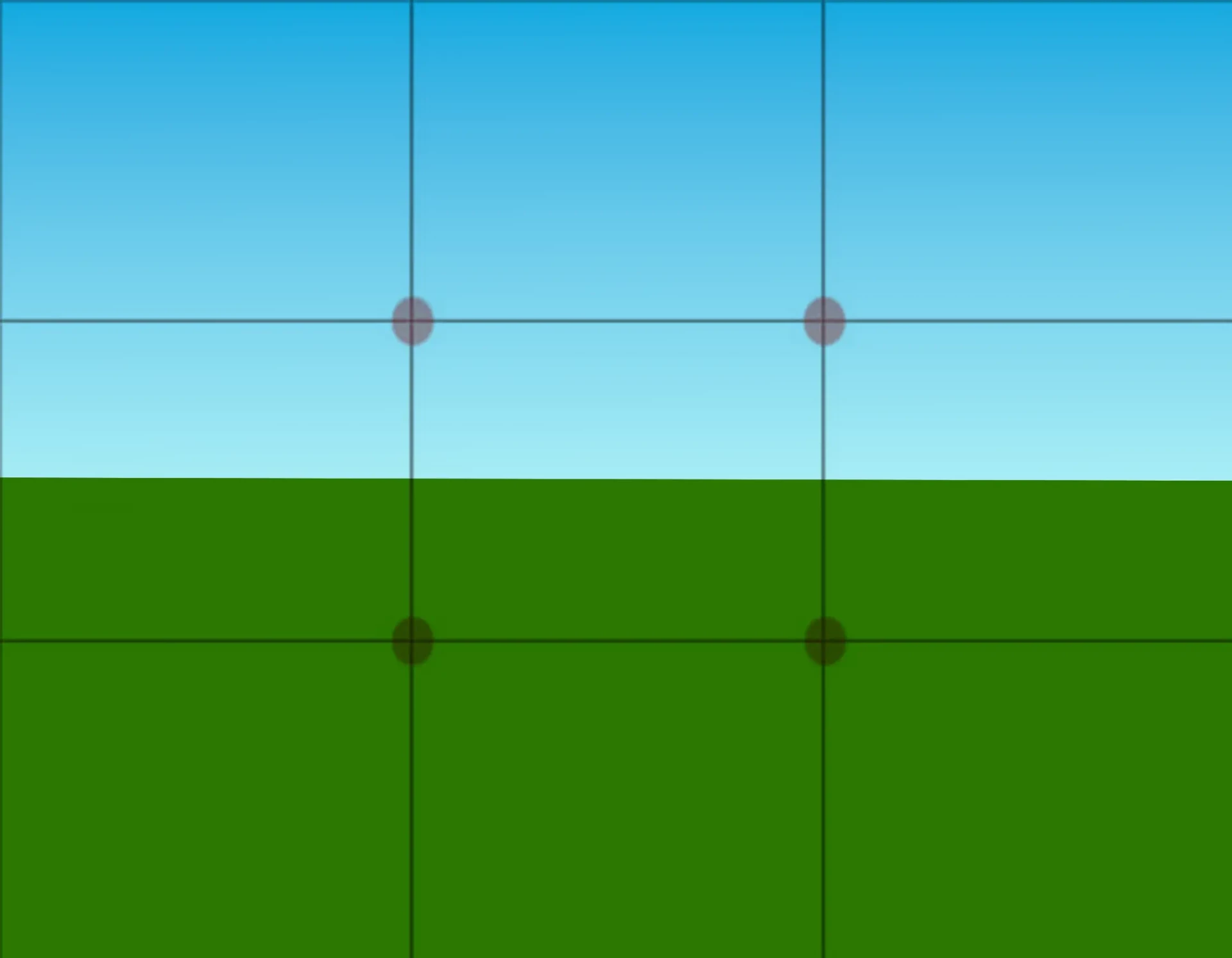
Start by applying a slightly darker blue, such as indigo blue. Then overlay a lighter layer, without completely covering the previous one. By building up the volumes in successive layers, you'll achieve more natural and deep clouds.
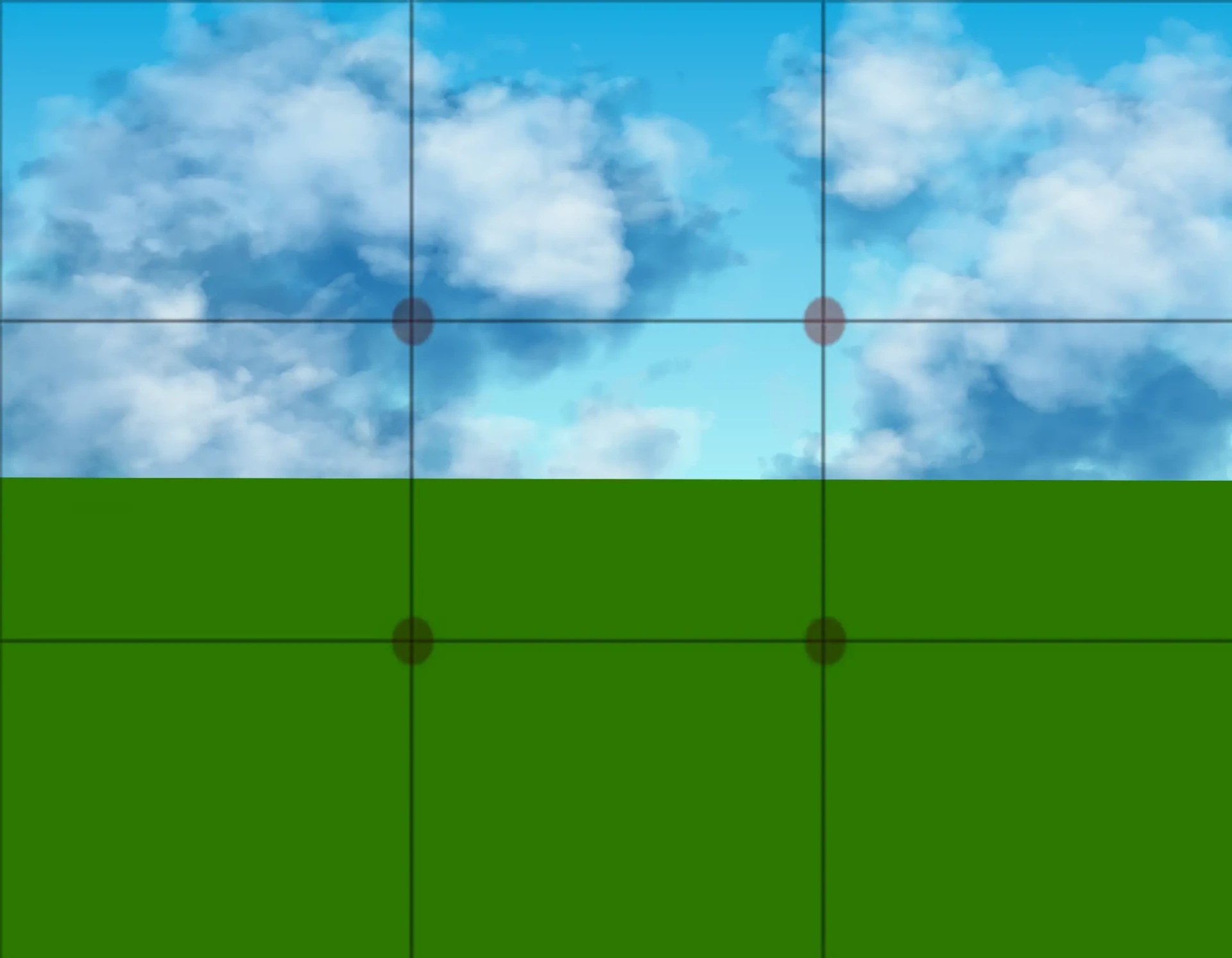
Add the background to the drawing
Our horizon is too flat: add some hills for a more natural look. To complete it, paint a forest in the distance: start with a strip of irregular shapes in dark green, then add touches of muted green, leaning towards gray. Finally, apply small touches of bright green in certain areas to energize the scene.
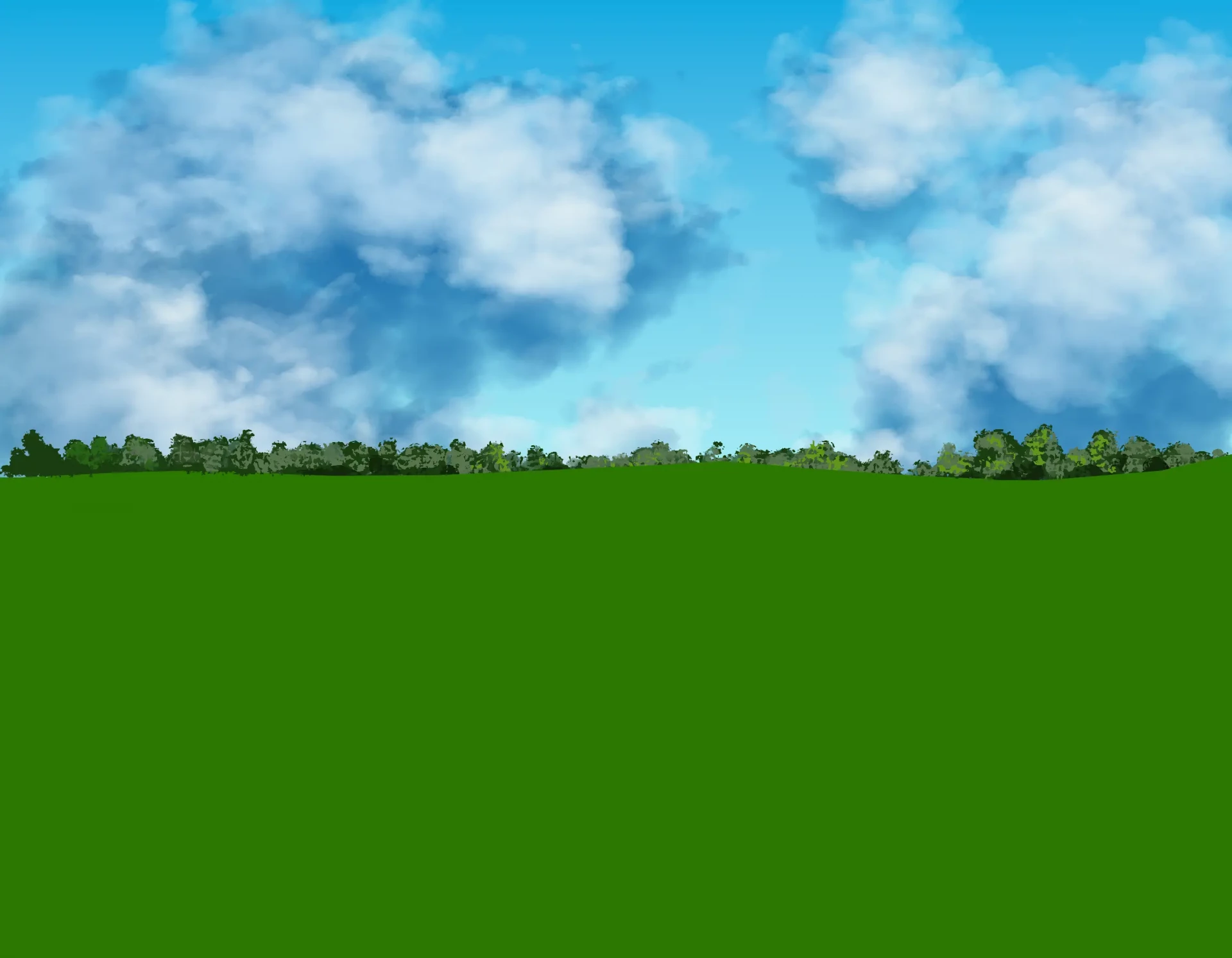
Spontaneously draw spots of green across the entire surface, varying tones and saturations. The wider the range, the richer the rendering will be.
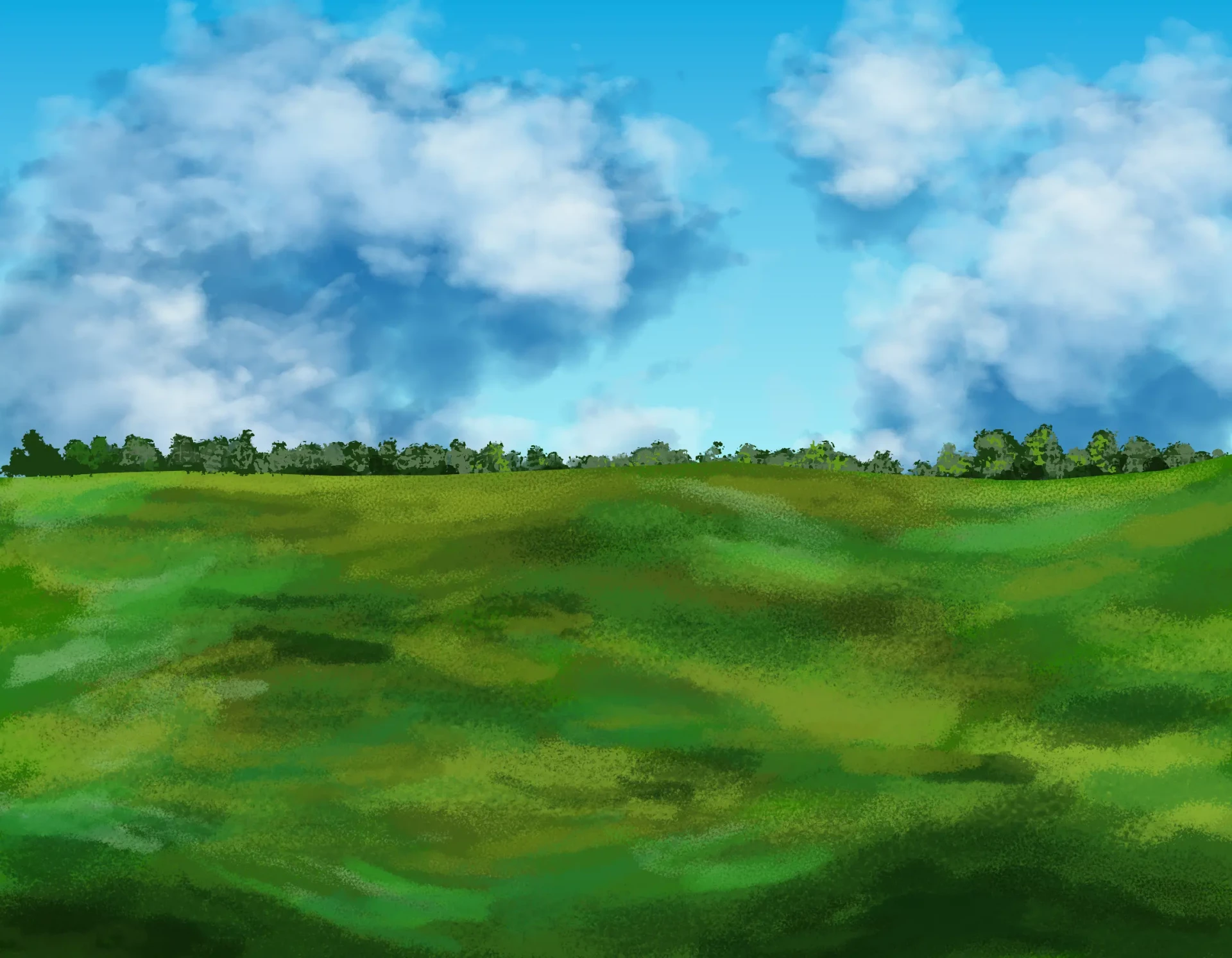
Then draw colored dots to create a layer of flowers across the entire meadow. You decide their number and intensity. Keep in mind that the closer they are to the horizon line, the smaller they should be.
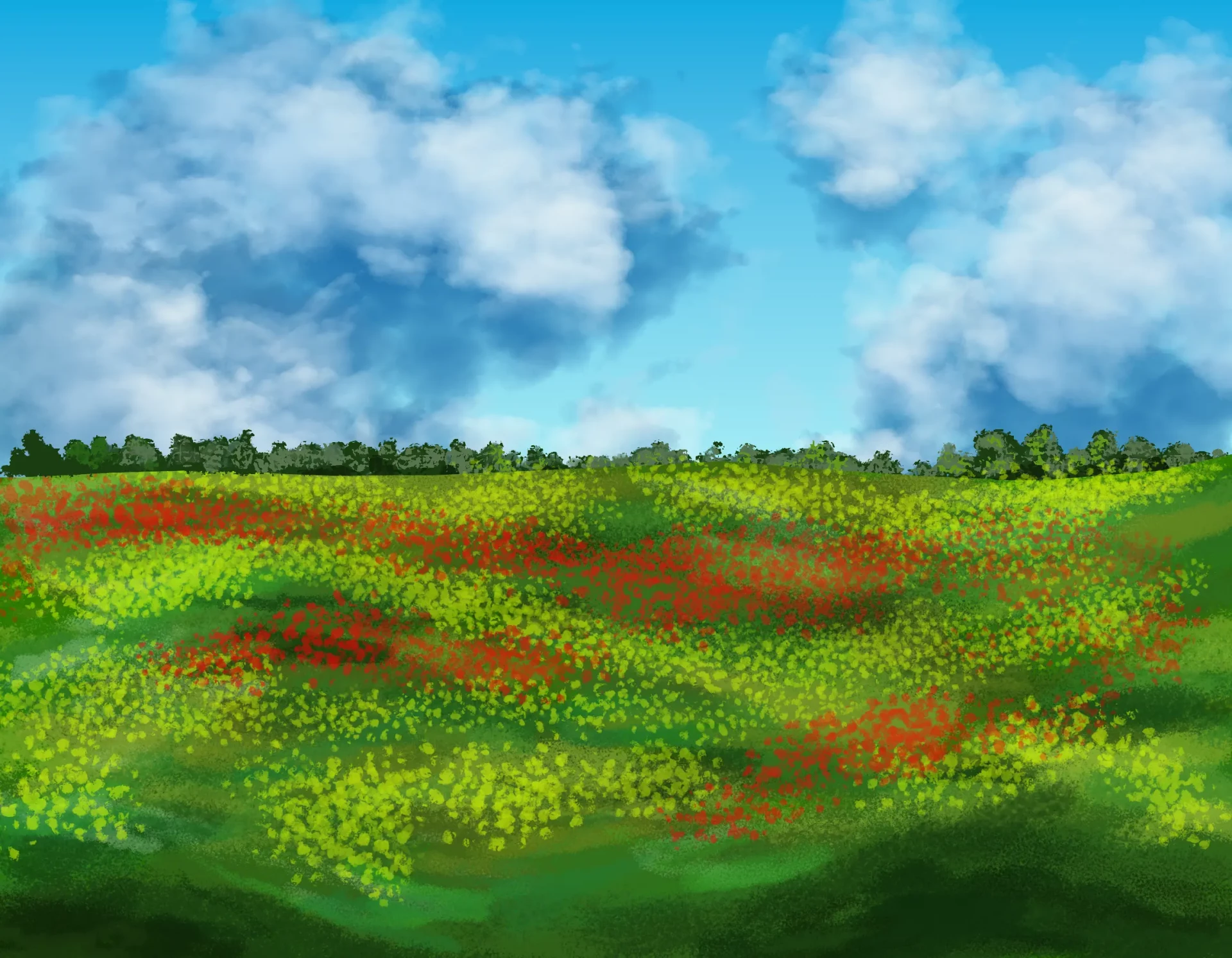
Then, add blades of grass between the flowers, varying the light and dark tones. Draw fine and diverse strokes, just like for the first layer of color touches.
Attention: the base layer does not disappear; on the contrary, it blends in subtly. Without it, the landscape would seem flat.
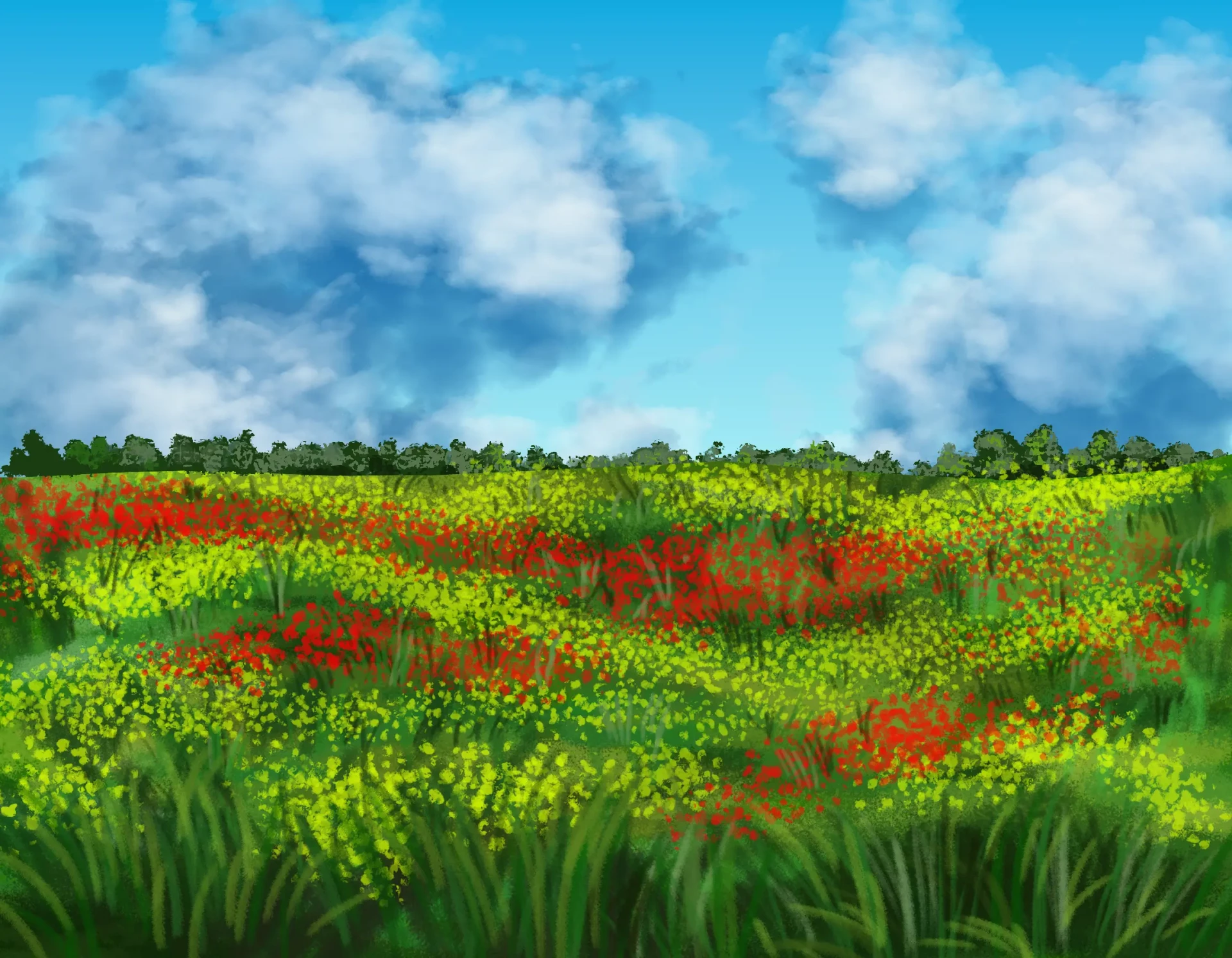
The flowers in the foreground must be more detailed. Take the time to draw a few of them, with shades of red or yellow to add volume and realism. If possible, add stems and leaves.
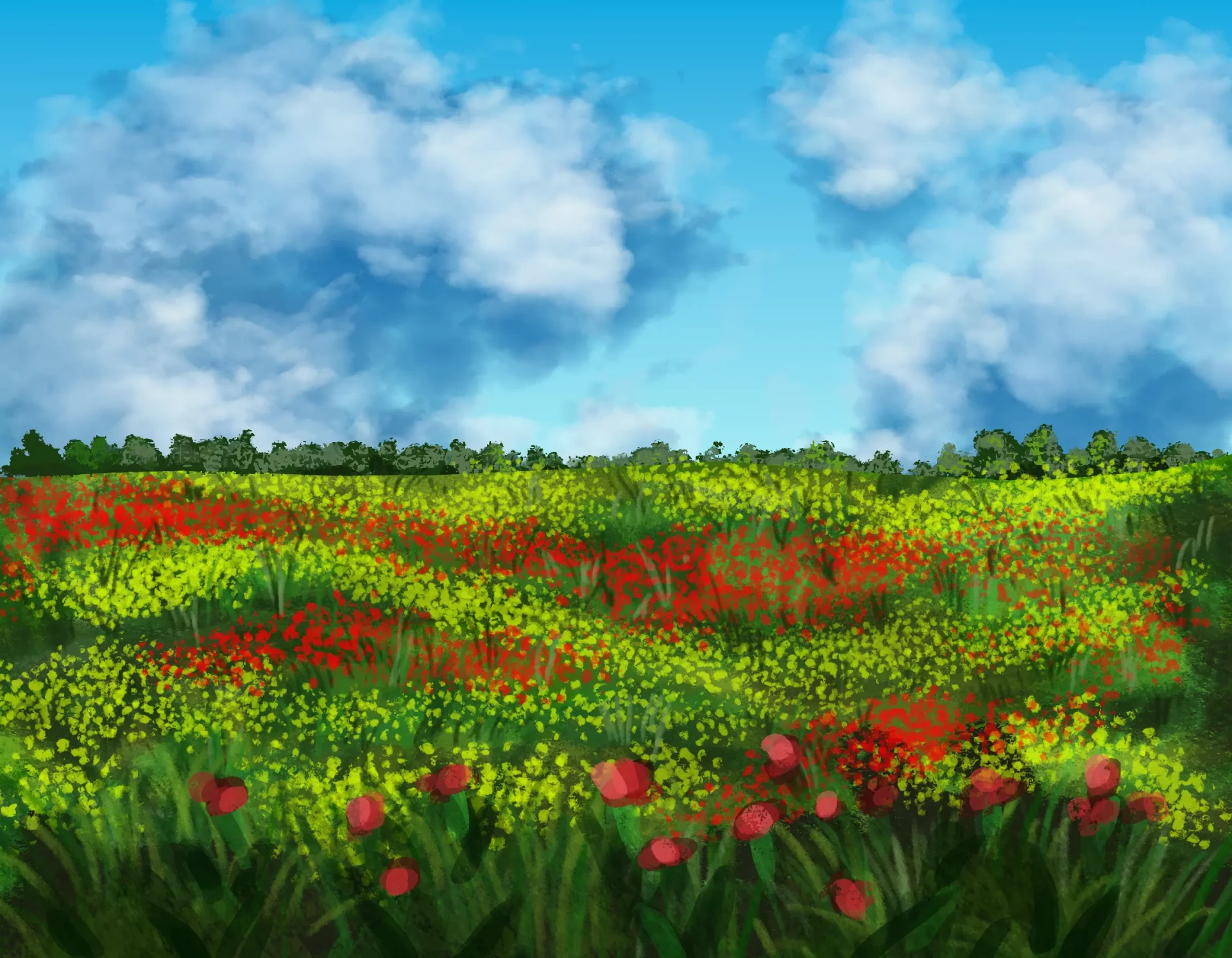
Add a realistic effect to the meadow drawing
To bring a more realistic effect and enhance the depth, add a tree or a bush in the foreground. There's no need to detail every element: a few leafy branches in dark tones, highlighted with a few touches of light, are enough. Slightly blur this addition, and you will achieve a convincing result.
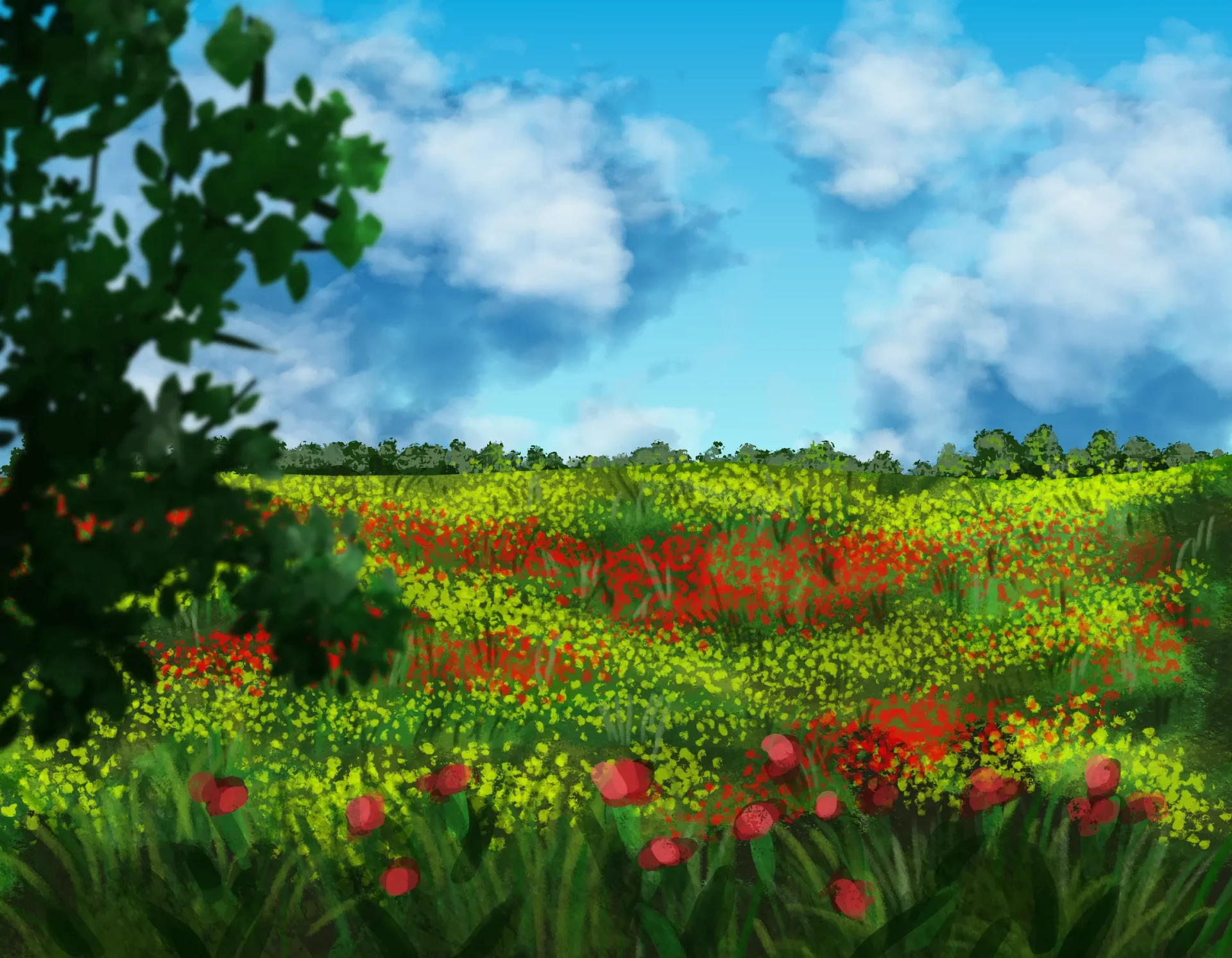
In this example, I have chosen to add a rainbow, optionally. It integrates very well into this type of landscape. Make sure to arrange the colors in the correct order, apply a subtle transparency, blur it, and slightly fade its ends to achieve a realistic optical effect.
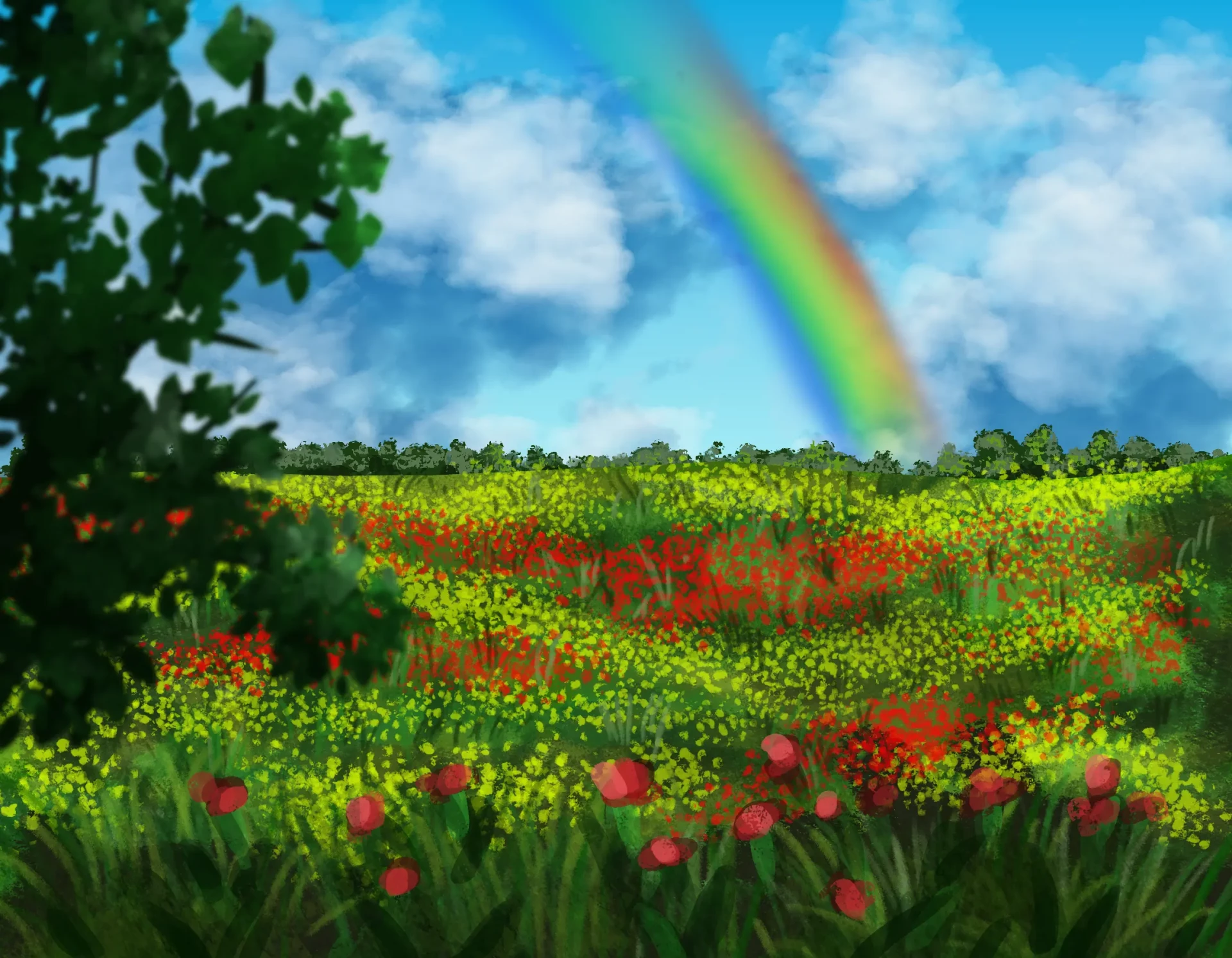
Add details to the drawing
Perhaps you find there are too many flowers? In this case, you can reduce the intensity of the colors with a fine layer of green, or if you are working digitally, by decreasing the opacity. To vary the tones further, retouch a few flowers in the different planes.

And there you go: a seemingly simple meadow, but rich in little details that exude calm and serenity. Now it's your turn to create your own: dive in and create your own landscape. Finally, don't forget that a few elements in the foreground are enough to give more depth and life to your composition.
Editor: Bryam

